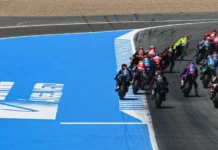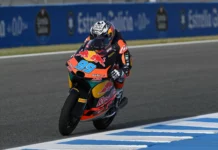As part of the American Motorcyclist Association’s long-term commitment to racer and fan safety, as well as improving the overall impression of the sport of motorcycle competition, the AMA is proposing a plan to reduce the sound levels at professional and amateur motorcycle racing events nationwide. The new rules would apply to AMA-sanctioned Supercross, motocross, and all-terrain vehicle closed-course competition events on both the professional and amateur levels. “Responsible sound management is an important part of the AMA’s strategic planning regarding the safety and health of both our competitors and race fans,” said AMA Chief Executive Officer Patricia DiPietro. “These measured reductions in the sound limits for closed-course competition at both the professional and amateur levels will not only make race courses safer and more enjoyable for competitors and fans alike, but they will improve the standing of our events among non-race fans who are nevertheless impacted by our sound policies.” In accordance with the rules-making process for AMA-sanctioned competition, both the Racing and Rights Committees will ask the Rules Committees for all professional AMA racing disciplines to pass these sound level standards this year so race teams and manufacturers have time to prepare for the 2008 season. The committees will also propose the same standards to the AMA Congress, which writes the rules for amateur motorcycle racing. Currently, motorcycles in closed-course AMA-sanctioned motorcycle competition must meet sound limits of 99 decibels (on the “A” scale), measured at a distance of 20 inches from motorcycle’s exhaust outlet. The proposed plan calls for reducing the allowable standard to 98 dB(A) for 2008, 97 dB(A) for 2009 and 96dB(A) for 2010. The current sound testing procedure uses the SAE J1287 stationary sound test, developed by the Society of Automotive Engineers. Using the SAE J1287, AMA officials and race teams can balance sound testing requirements with the logistical hurdles of testing every motorcycle entered in an event. In this procedure, the motorcycle is brought to a prepared test site. With the engine warm and the transmission in neutral, engine revolutions per minute (rpm) are brought up to the specified test speed (306,000m divided by the stroke in millimeters) and a sound reading is taken. The sound level is measured 20 inches from the exhaust outlet, with the sensor held parallel to the ground and at a 45-degree angle to the exhaust centerline. “Sound is every motorcyclist’s responsibility, because excessive sound impacts every motorcyclist, from competitor to street rider,” DiPietro said. “It’s important that we continue to move forward and improve in this important area.” The American Motorcyclist Association: rights. riding. racing. Founded in 1924, the AMA is a non-profit organization with more than 270,000 members. The Association`s purpose is to pursue, protect and promote the interests of motorcyclists, while serving the needs of its members. For more information, visit the AMA website at www.AMADirectlink.com.
AMA Proposing New Sound Limits For Amateur And Professional Racing Events
AMA Proposing New Sound Limits For Amateur And Professional Racing Events
© 2007, Roadracing World Publishing, Inc.






